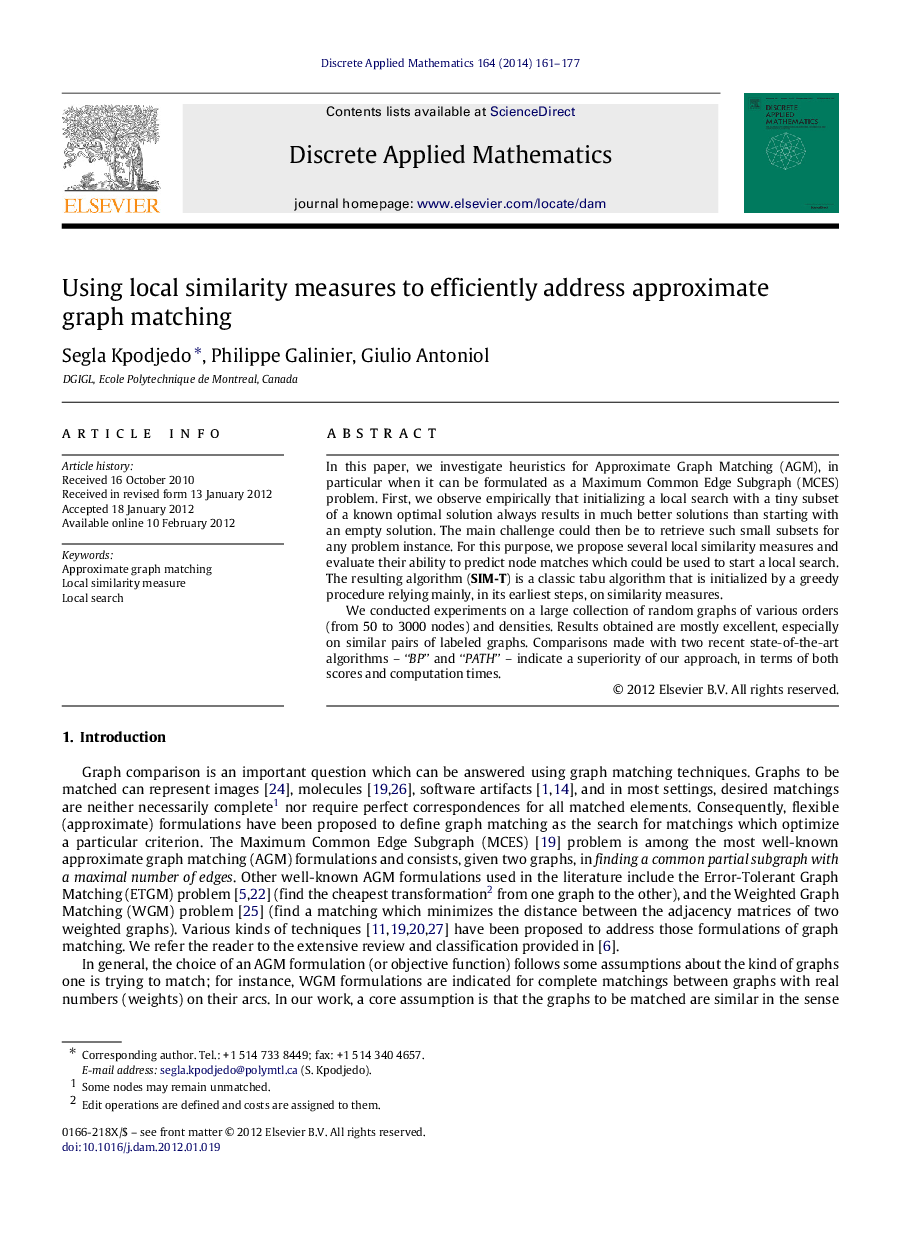| Article ID | Journal | Published Year | Pages | File Type |
|---|---|---|---|---|
| 419094 | Discrete Applied Mathematics | 2014 | 17 Pages |
In this paper, we investigate heuristics for Approximate Graph Matching (AGM), in particular when it can be formulated as a Maximum Common Edge Subgraph (MCES) problem. First, we observe empirically that initializing a local search with a tiny subset of a known optimal solution always results in much better solutions than starting with an empty solution. The main challenge could then be to retrieve such small subsets for any problem instance. For this purpose, we propose several local similarity measures and evaluate their ability to predict node matches which could be used to start a local search. The resulting algorithm (SIM-T) is a classic tabu algorithm that is initialized by a greedy procedure relying mainly, in its earliest steps, on similarity measures.We conducted experiments on a large collection of random graphs of various orders (from 50 to 3000 nodes) and densities. Results obtained are mostly excellent, especially on similar pairs of labeled graphs. Comparisons made with two recent state-of-the-art algorithms–“BP” and “PATH”–indicate a superiority of our approach, in terms of both scores and computation times.
